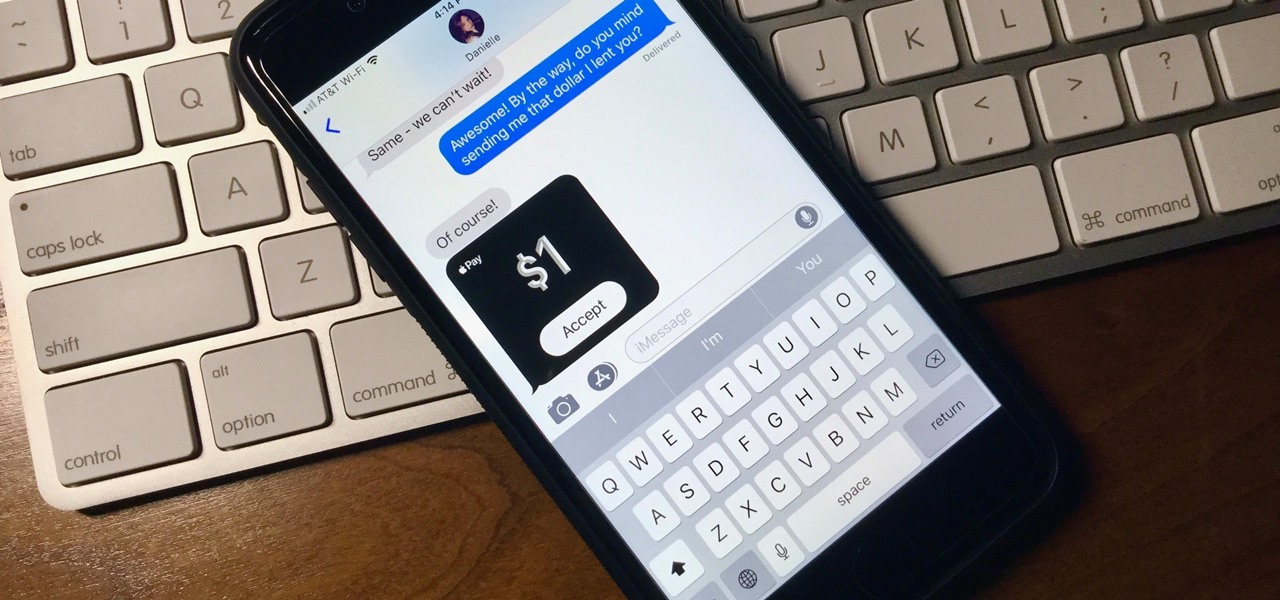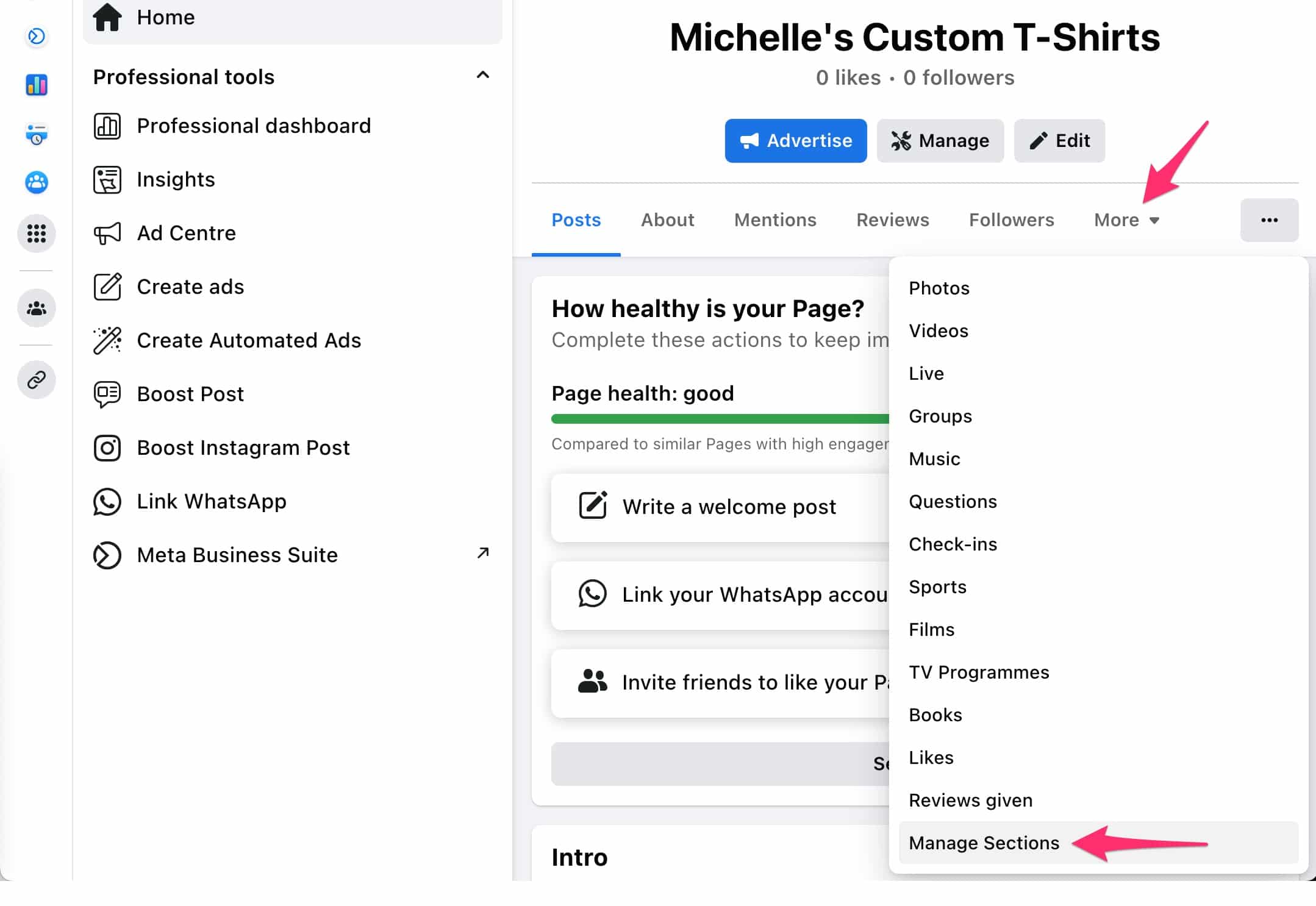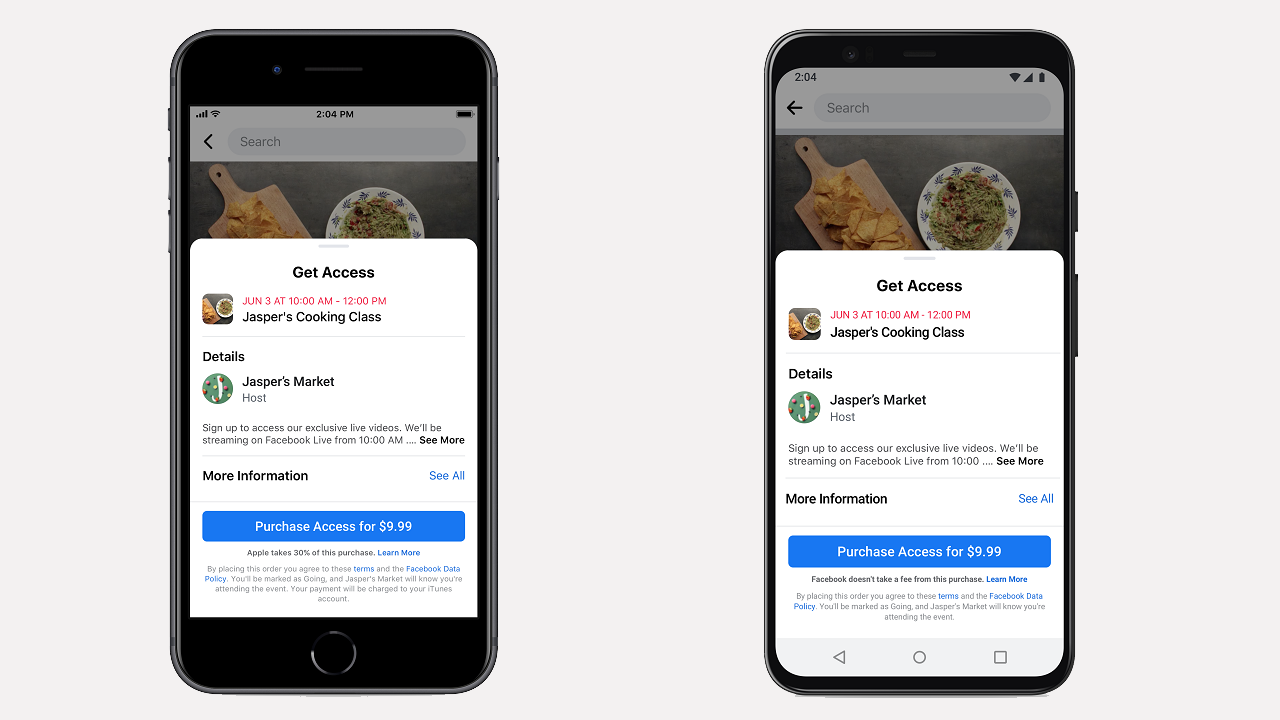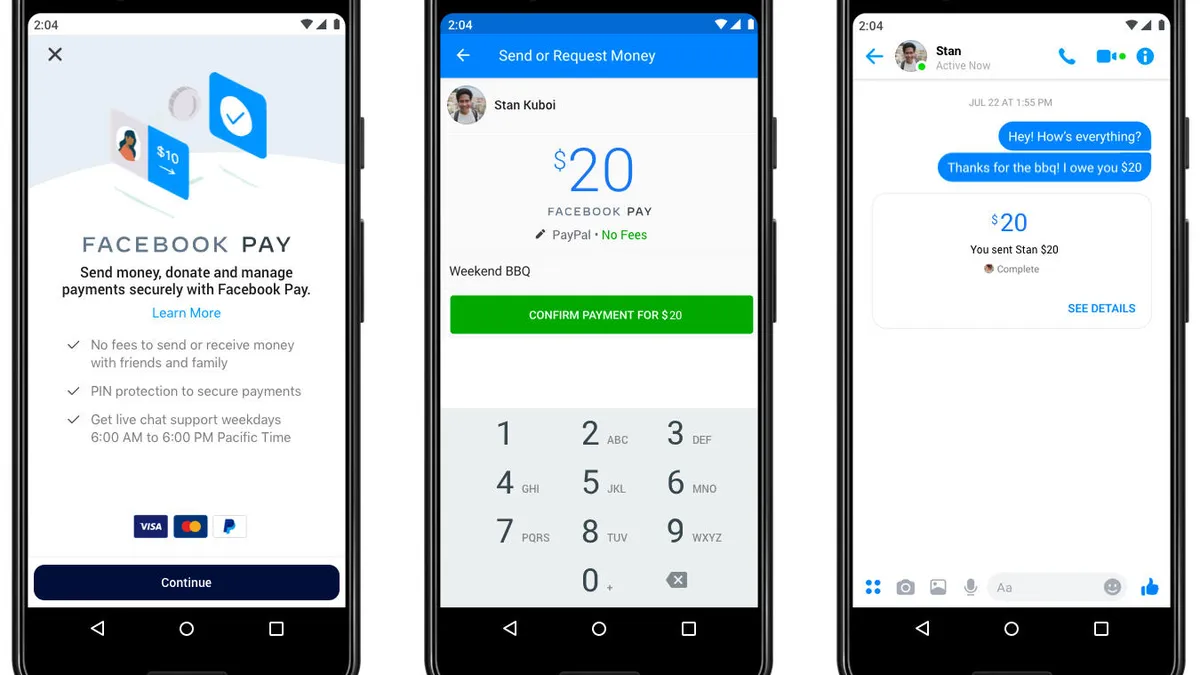Introduction
Welcome to our guide on how to refund a Facebook Pay transaction. With the rise of online purchases and digital payments, it’s inevitable that at some point you may need to request a refund for a transaction made through Facebook Pay. Whether you’ve accidentally sent money to the wrong person, encountered an issue with a purchase, or simply changed your mind about a transaction, Facebook Pay offers a convenient and secure way to handle refunds.
In this comprehensive guide, we’ll walk you through the step-by-step process of refunding a transaction on Facebook Pay. We’ll also provide valuable tips and insights to help you successfully navigate the refund request process. So, if you’ve found yourself in a situation where you need to reverse a Facebook Pay transaction, you’ve come to the right place.
Before we delve into the details of the refund process, it’s important to understand the reasons why one might request a refund through Facebook Pay. It could be due to a variety of factors, such as an item not being as described, receiving a damaged product, or fraudulent activity on your account. Identifying the reason behind your refund request will help streamline the process and ensure that you are eligible for a refund.
So, whether you’re a regular user of Facebook Pay or new to the platform, let’s get started on your journey to successfully refunding a Facebook Pay transaction.
Reasons for Requesting a Refund
There are several reasons why you may find yourself needing to request a refund for a Facebook Pay transaction. Understanding these reasons can help you determine if you are eligible for a refund and provide you with valuable insights when making your refund request. Here are some common scenarios that may warrant a refund:
- Item not as described: If you purchased a product or service through Facebook Pay and it doesn’t match the description provided by the seller, you have a valid reason to request a refund. This could be anything from receiving a different color or size than what was advertised, to the item not functioning as described.
- Damaged or defective product: When you receive a product that is damaged or defective, it’s only fair to request a refund. Whether it’s a cracked screen, missing parts, or any other defects, documenting the issue and reaching out to the seller for a refund is the right course of action.
- Unauthorized transaction: If you notice a transaction on your Facebook Pay account that you did not authorize, it is crucial to report and request a refund. This could be a result of fraudulent activity or someone gaining unauthorized access to your account.
- Duplicate payment: Sometimes, technical glitches or human error can lead to unintentional duplicate payments. If you realize that you’ve been charged multiple times for the same transaction, it’s important to reach out to the seller and request a refund for the additional charges.
- Change of mind: While not all transactions are refundable due to a change of mind, some sellers may offer refunds for certain purchases. It’s essential to review the refund policy of the seller before making a purchase, as it may vary depending on the product or service.
No matter the reason for your refund request, it’s crucial to provide clear and detailed information when submitting your request. This will help the seller and Facebook Pay support team understand your situation and process your refund more effectively.
Now that we’ve explored the common reasons for requesting a refund, let’s move on to the next section, where we’ll discuss the eligibility criteria for a refund and outline the steps to initiate a refund through Facebook Pay.
Eligibility for Refund
Before proceeding with a refund request on Facebook Pay, it’s important to determine whether you are eligible for a refund. While Facebook Pay strives to provide a seamless and reliable payment experience, not all transactions may qualify for a refund. Here are some factors to consider when assessing your eligibility:
1. Adherence to seller’s refund policy: The first step is to familiarize yourself with the seller’s refund policy. Each seller may have their own policies in place regarding refunds for their products or services. Some sellers may offer full refunds, while others may have specific criteria or time limits for eligibility. Ensure that you review and understand the seller’s refund policy before initiating a refund request.
2. Valid reasons for refund: As discussed in the previous section, valid reasons for requesting a refund may include receiving an item that doesn’t match the description, obtaining a damaged or defective product, noticing an unauthorized transaction, or experiencing a duplicate payment. It’s essential to have a legitimate reason that aligns with the refund policy of the seller.
3. Documented evidence: When submitting a refund request, it’s helpful to provide supporting evidence to strengthen your case. This could include photographs of damaged products, screenshots of incorrect item descriptions, or any other relevant documentation that proves your claim. Clear and detailed evidence increases the likelihood of a successful refund.
4. Timeliness: Timeliness is another important factor when it comes to eligibility for a refund. Many sellers have specific timeframes within which you can request a refund. Ensure that you initiate your refund request within the specified timeframe to improve your chances of a successful resolution. Delaying your refund request may reduce the likelihood of approval.
5. Compliance with Facebook Pay’s terms and conditions: Lastly, it’s important to ensure that your transaction adheres to Facebook Pay’s terms and conditions. Violations of these terms may impact your eligibility for a refund. It’s advisable to review the terms and conditions to ensure that your transaction aligns with the platform’s guidelines.
Remember, each refund request is evaluated on a case-by-case basis, and the final decision rests with the seller or Facebook Pay support team. Providing accurate information, adhering to refund policies, and presenting a strong case with supporting evidence are key to improving your chances of a successful refund request.
Now that we’ve covered the eligibility criteria, let’s move on to the next section, where we’ll outline the step-by-step process of refunding a Facebook Pay transaction.
Steps to Refund a Facebook Pay Transaction
Refunding a Facebook Pay transaction is a straightforward process that can be accomplished in just a few simple steps. Follow the guide below to initiate a refund for a transaction made through Facebook Pay:
- Step 1: Access Facebook Pay: Log into your Facebook account and navigate to the settings menu. Locate and click on “Facebook Pay” to access your payment settings.
- Step 2: Open Transaction History: Within the Facebook Pay settings, find the “Transaction History” tab or option. Click on it to view a list of your recent transactions.
- Step 3: Locate the Transaction: Scroll through the transaction history to find the specific transaction you want to refund. Take note of the transaction details, such as the date, amount, and recipient name, to ensure you are refunding the correct transaction.
- Step 4: Click on the Transaction: Once you’ve located the transaction, click on it to open the transaction details page. This page will provide you with more information about the transaction and options for managing it.
- Step 5: Initiate Refund: On the transaction details page, look for an option or button to request a refund. Click on it to initiate the refund process. You may be asked to provide a reason for the refund, so be prepared to select the appropriate option or provide additional details if necessary.
- Step 6: Confirm the Refund: After submitting your refund request, you will typically receive a confirmation message indicating that your request has been received. Keep in mind that it may take some time for the refund to be processed and reflected in your account.
- Step 7: Monitor Refund Status: To track the progress of your refund, you can revisit the transaction history or contact the seller directly. If the refund is approved, the refunded amount will typically be returned to your original payment method.
It’s important to note that the specific steps and options may vary slightly depending on the version and settings of Facebook Pay. If you encounter any difficulties or have questions during the refund process, don’t hesitate to reach out to Facebook Pay support for assistance.
Now that you’re familiar with the steps involved in refunding a Facebook Pay transaction, let’s move on to the next section, where we’ll discuss how to contact Facebook Pay support for further assistance.
Contacting Facebook Pay Support
If you encounter any issues or have questions regarding your refund request or other concerns related to Facebook Pay, it’s important to reach out to their support team for assistance. Facebook Pay provides several channels through which you can contact their support team, ensuring that you receive the help you need. Here are some ways to get in touch with Facebook Pay support:
1. Help Center: The Facebook Help Center is a comprehensive resource that covers a wide range of topics, including Facebook Pay. You can visit the Help Center and search for relevant articles or guides to find answers to your questions. The Help Center is accessible via the Facebook website or mobile app.
2. Contact Form: If you need personalized assistance, you can fill out a contact form available on the Facebook website or mobile app. Provide detailed information and a clear description of your issue or question, and the Facebook Pay support team will respond to you via email.
3. Community Forums: Facebook has an active user community where you can seek advice or guidance from fellow users. Joining relevant Facebook groups or forums can be a helpful way to connect with others who may have experienced similar issues and can provide suggestions or solutions.
4. Social Media: Facebook also has official support channels on social media platforms like Twitter or Facebook itself. You can reach out to Facebook Pay support through their official social media accounts by sending a direct message or mentioning them in a post. Keep in mind that response times may vary, so this option may not be the most immediate.
When contacting Facebook Pay support, it’s important to provide all relevant details about your issue, including transaction information, screenshots, or any other supporting documentation. The more information you provide, the easier it will be for the support team to assist you effectively.
It’s worth noting that Facebook Pay support operates during specific hours and may have response timeframes in place. While they strive to resolve issues as quickly as possible, it’s important to exercise patience and allow ample time for a response.
Now that you’re aware of the various channels for contacting Facebook Pay support, let’s move on to the next section, where we’ll discuss some helpful tips for a successful refund request.
Tips for a Successful Refund Request
Requesting a refund through Facebook Pay can sometimes be a complex process, but following these tips can help increase the likelihood of a successful outcome:
1. Act promptly: As soon as you identify the need for a refund, take action promptly. Many sellers have specific timeframes within which you can request a refund, so make sure you initiate the refund request within the specified time limit.
2. Provide clear and detailed information: When submitting your refund request, be sure to provide clear and detailed information about the transaction and the reason for the refund. Include relevant details such as dates, amounts, and any supporting evidence, like screenshots or photographs, to support your case.
3. Be polite and respectful: It’s important to maintain a respectful and polite tone when communicating with the seller or Facebook Pay support team. Politeness can go a long way in building a positive relationship and improving the chances of a successful refund resolution.
4. Keep records of communication: Make sure to keep a record of all communication related to your refund request, including emails, chat conversations, or any other form of correspondence. Having a documented record can be helpful in case further action needs to be taken.
5. Follow up if necessary: If you haven’t received a response or resolution within a reasonable timeframe, don’t hesitate to follow up on your refund request. Polite and timely follow-ups can help ensure that your request doesn’t get overlooked.
6. Stay updated on refund policies: Stay informed about the refund policies of both Facebook Pay and the seller. Familiarize yourself with the terms and conditions and any specific refund guidelines provided. This knowledge will help you understand your rights and navigate the refund process more effectively.
7. Reach out to Facebook Pay support if needed: If you encounter any difficulties or have questions during the refund process, don’t hesitate to contact Facebook Pay support. They are there to assist you and ensure a smooth refund experience.
By following these tips, you can increase the likelihood of a successful refund request and potentially avoid any unnecessary complications.
Now that you’re equipped with some valuable tips, let’s move on to the next section, where we’ll address some common issues that may arise during the refund process and provide troubleshooting suggestions.
Common Issues and How to Troubleshoot Them
During the process of refunding a Facebook Pay transaction, you may encounter certain common issues. Understanding these challenges and knowing how to troubleshoot them can help you navigate the refund process more smoothly. Here are some common issues you may face and tips to troubleshoot them:
1. Delayed refund: If you haven’t received your refund within the expected timeframe, first check the refund status in your transaction history. If the refund status is “pending,” it means that the refund is being processed, and the funds should be returned to your account soon. If the refund status remains pending for an extended period, consider reaching out to Facebook Pay support for assistance.
2. Seller non-response: If the seller does not respond to your refund request or refuses to issue a refund, check if they have a publicly available contact information or customer support channel. Reach out to them directly and clearly express your concerns. If you still cannot resolve the issue, escalate it to Facebook Pay support, providing all necessary details and evidence.
3. Technical glitches: In some cases, you may encounter technical glitches during the refund process, such as error messages or the inability to initiate a refund. Try clearing your browser cache and cookies, or switch to a different browser or device. If the issue persists, contact Facebook Pay support and provide details about the problem you’re facing.
4. Disputed refund: If the seller disputes your refund request, it may require additional investigation to resolve the issue. Provide any relevant evidence or documentation to support your claim, such as screenshots or proof of communication. Facebook Pay support will review the dispute and communicate their decision to you.
5. Inconsistent refund policies: Refund policies may vary among sellers, leading to confusion or inconsistencies. Familiarize yourself with the specific refund policies of each seller before making a purchase. If you encounter conflicting information or need clarification, reach out to the seller or consult Facebook Pay support for guidance.
6. Unauthorized refund request: If you notice a refund request that you didn’t initiate or authorize, it could be a sign of unauthorized activity on your account. Take immediate action by contacting Facebook Pay support to report the issue and safeguard your account.
7. Communication barriers: Language barriers or difficulties in understanding refund policies may pose challenges during the refund process. If English is not your first language, consider using translation tools or seeking assistance from a bilingual friend or family member to ensure clear communication.
If you encounter any other issues or challenges that are not mentioned here, don’t hesitate to seek guidance from Facebook Pay support. They are well-equipped to address a wide range of issues and can help troubleshoot specific problems you may encounter.
Now that we’ve covered common issues and their troubleshooting tips, let’s explore the timeframe for receiving a refund in the next section.
Timeframe for Receiving a Refund
The timeframe for receiving a refund through Facebook Pay can vary depending on several factors, including the seller’s refund policy, the nature of the transaction, and any additional investigation required. While there is no fixed timeframe that applies universally, it’s helpful to have a general understanding of the refund process and the time it may take for the funds to be returned to your account.
In many cases, once you initiate a refund request, it takes time for the seller or Facebook Pay support team to review and process the request. This could involve verifying the details of the transaction, verifying the reason for the refund, or investigating any disputes. The refund process may also be subject to the specific policies and practices of the seller.
Typically, refunds through Facebook Pay can take anywhere from a few days to several weeks to be completed. The actual timeframe can depend on various factors, such as the responsiveness of the seller, the complexity of the issue, and the payment method used. While some refunds may be processed quickly, others may require more time due to the need for further investigation or approval.
During the refund process, it’s crucial to closely monitor your transaction history for any updates on the refund status. If you do not see any progress or if the refund is taking longer than anticipated, you may wish to reach out to the seller or contact Facebook Pay support for an update.
It’s important to exercise patience during the refund process and allow sufficient time for the funds to be returned. However, if you believe that an unreasonable amount of time has passed without any resolution, you can escalate the issue with Facebook Pay support for further assistance.
Keep in mind that the exact timeframe for receiving a refund can vary significantly depending on the specific circumstances and the parties involved. It’s always advisable to review the refund policies of the seller before making a purchase and to familiarize yourself with the timeline for refunds outlined by Facebook Pay.
Now that you have an understanding of the timeframe involved in receiving a refund, let’s explore alternatives to refunding Facebook Pay transactions in the next section.
Alternatives to Refunding Facebook Pay Transactions
While refunding a Facebook Pay transaction is often the preferred solution, there may be instances where a refund is not possible or not the most suitable option. In such cases, it’s helpful to explore alternative avenues to address the issue or concern related to the transaction. Here are some alternatives to consider:
1. Exchange or replacement: If the item you purchased through Facebook Pay is not as described or is damaged, you may be able to request an exchange or replacement from the seller. Reach out to them directly and express your concerns. Many sellers are willing to work with you to resolve the issue without a refund.
2. Store credit or voucher: Instead of a monetary refund, some sellers may offer store credit or a voucher for future purchases. This can be a suitable alternative, especially if you plan to continue shopping with that seller and want to use the credit towards a different item or service.
3. Service adjustment or fix: If you’ve encountered issues with a service you paid for through Facebook Pay, such as a subscription or membership, consider discussing the problem with the provider. They may offer to adjust or fix the service to address your concerns, instead of issuing a refund.
4. Negotiate a resolution: In certain situations, it may be possible to negotiate a mutually satisfactory resolution with the seller. This could involve a partial refund, a discount on future purchases, or other arrangements agreed upon by both parties. Open communication and a willingness to find a compromise can help in these situations.
5. Seek assistance from intermediaries: If a seller is unresponsive or unwilling to work with you, consider reaching out to intermediaries such as consumer protection agencies or dispute resolution services. These organizations can provide guidance and help facilitate a resolution between you and the seller.
6. Learn from the experience: If the transaction is not refundable, and you are unable to find a resolution, it’s essential to view it as a learning experience. Take note of any lessons or insights gained from the situation to avoid similar issues in the future. This could involve exercising caution when making purchases, conducting thorough research, or relying on trusted sources for recommendations.
Remember, the availability of these alternatives may vary depending on the specific circumstances and the policies of the seller. It’s always recommended to review the refund policy of the seller before making a purchase and to explore alternative options if a refund is not feasible.
Now that you have some alternatives to consider, let’s wrap up this guide in the next section with a brief summary and final thoughts.
Conclusion
Refunding a Facebook Pay transaction doesn’t have to be a daunting process. With the right knowledge and understanding of the refund policy, eligibility criteria, and steps involved, you can navigate the refund process confidently and successfully.
In this comprehensive guide, we explored the reasons for requesting a refund, eligibility criteria, steps to refund a Facebook Pay transaction, how to contact Facebook Pay support for assistance, and tips for a successful refund request. We also discussed common issues that may arise during the refund process and alternative options to consider if a refund is not feasible.
Remember to act promptly, provide clear and detailed information, stay informed about refund policies, and maintain respectful communication throughout the process. Keep track of all communication and follow up if necessary. If you encounter any challenges or need assistance, reach out to Facebook Pay support for guidance.
It’s important to note that the timeframe for receiving a refund can vary depending on various factors, including the seller’s policies and any investigation required. Exercise patience and monitor the refund status in your transaction history, and don’t hesitate to follow up if the refund is delayed.
While refunding a transaction is often the desired outcome, exploring alternative avenues such as exchanges, store credit, or negotiation can provide viable solutions in certain situations.
By following the information and tips provided in this guide, you can navigate the refund process on Facebook Pay with confidence and increase the chances of a successful resolution.
Now that you’re equipped with the knowledge and resources, you’re ready to handle refund requests on Facebook Pay effectively. Good luck, and may your refund requests be seamless and satisfying!

























